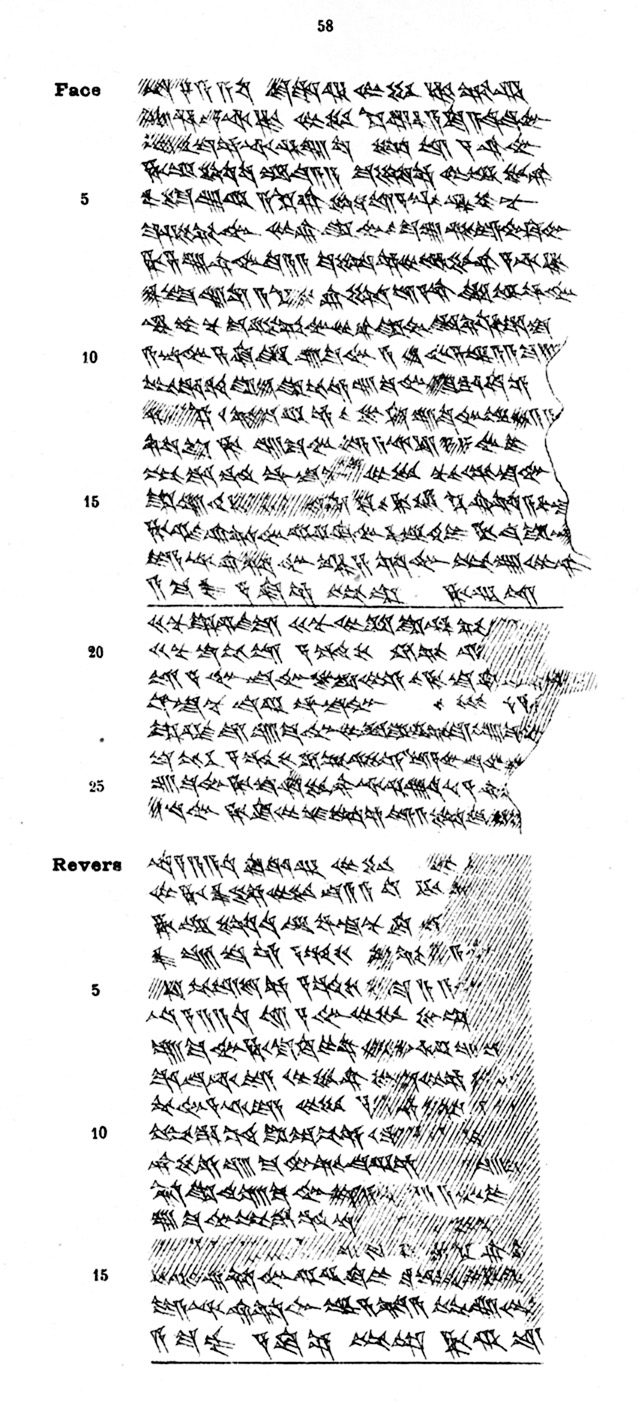Aramaic Incantation in Cuneiform
Artifact: Clay Tablet
Provenience: Uruk
Period: Hellenistic (ca. 323-363 BC)
Current location: Louvre Museum, Paris, France
Text genre, language: Religious; Aramaic
CDLI page
Description: Although the provenance and date cannot be established with certainty, the text is probably Seleucid and is written in Eastern Aramaic. Although the text does not conform to any known genres, nor is it a precursor to the later Aramaic incantation bowls, it consists of incantations that address slander. Other than a Late Babylonian school text whose first two columns seem to render the Aramaic alphabet in cuneiform script, this is the only known Aramaic inscription in cuneiform. While it is likely that Aramaic took over as the spoken language in the ancient Near East in the first millennium BC, such a text is unique. (Moudhy Al-Rashid, University of Oxford)
Editions: Geller, M.J.. 2001. "The Aramaic Incantation in Cuneiform Script (AO 6489 = TCL 6,58)", JEOL 35/36, pp. 127-146; Gordon, Cyrus H. 1937-1939. "The Aramaic Incantation in Cuneiform", AfO 12, pp. 105-117; Kessler, Karlheinz. 2009. "Das wahre Ende Babylons - die Tradition der Aramäer, Mandäer, Juden und Mänichäer", in: J. Marzahn & G. Schauerte (eds) Babylon. Wahrheit (Berlin): 467-486, 471, Abb. 336 (Photo).


